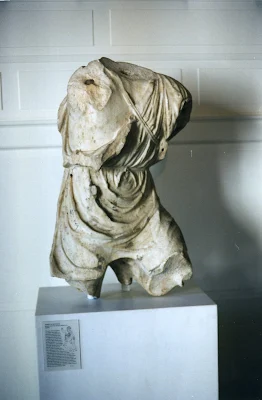I've walked in Cote des Neiges Cemetery many times, including winter when some roads were closed due to the snow. I know it seems "morbid" to some people--hanging out in cemeteries--but walking in cemeteries has always been very pleasant for me. Like many people, when in foreign cities, I visit museums and historical sites, but also cemeteries. It has to do with an interest in family history, but in Montreal cemeteries are also places with green spaces and the quiet of the country in the city. Increasingly, cemeteries are nature preserves. There is bird watching, walking, and even some biking through the cemetery. Most of all, there is a sense of history and a place of quiet that you rarely find elsewhere in the city.
Cote des Neiges is the traditionally Catholic cemetery in Montreal, owned by the Sulpician Order that once owned the Island of Montreal, and still owns Notre Dame Basilica in Old Montreal, the College de Montreal, and Le Grand Seminaire de Montreal just east of the corner of Sherbrooke Street West and Atwater. This is the cemetery for Montreal's French and Irish and now many others, new people who live here, who are a part of the multi-cultural aspect of the city that helps make it the interesting place that it is.
Cote des Neiges is the traditionally Catholic cemetery in Montreal, owned by the Sulpician Order that once owned the Island of Montreal, and still owns Notre Dame Basilica in Old Montreal, the College de Montreal, and Le Grand Seminaire de Montreal just east of the corner of Sherbrooke Street West and Atwater. This is the cemetery for Montreal's French and Irish and now many others, new people who live here, who are a part of the multi-cultural aspect of the city that helps make it the interesting place that it is.




















































